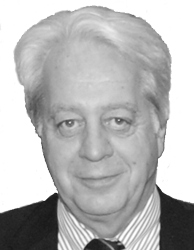About us
Paola Pizzo
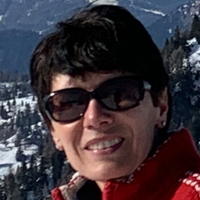
 I graduated in Biological Sciences in 1988, with full marks, at the University of Padua, Italy. In 1993, at the University of Bologna, Italy, I obtained my Ph.D. in Experimental Pathology, working in the laboratories of Prof. Francesco Di Virgilio and Prof. Giovanni Salviati. Afterwards, thanks to the support of EMBO (short-term fellowship) and Telethon, I was a post-doc at the Weizmann Institute of Science, Rehovot, Israel, in the laboratory of Prof. David Yaffe, working on a new product of the dystrophin gene, the Dp71 protein. Returning to Padua, I joined the lab of Prof. Tullio Pozzan at the University’s Institute of Pathology, working first as a research assistant and later as an academic researcher. In 2012, I was a visiting scientist for two months at the Institute of Neuroscience, University of Oregon, USA, in the laboratory of Dr. Philip Washbourne. In 2023, I was appointed Full Professor of General Pathology, School of Medicine, University of Padua. In my free time, I enjoy staying with my family, walking or skiing in the Dolomites, and swimming with a master team in my city.
I graduated in Biological Sciences in 1988, with full marks, at the University of Padua, Italy. In 1993, at the University of Bologna, Italy, I obtained my Ph.D. in Experimental Pathology, working in the laboratories of Prof. Francesco Di Virgilio and Prof. Giovanni Salviati. Afterwards, thanks to the support of EMBO (short-term fellowship) and Telethon, I was a post-doc at the Weizmann Institute of Science, Rehovot, Israel, in the laboratory of Prof. David Yaffe, working on a new product of the dystrophin gene, the Dp71 protein. Returning to Padua, I joined the lab of Prof. Tullio Pozzan at the University’s Institute of Pathology, working first as a research assistant and later as an academic researcher. In 2012, I was a visiting scientist for two months at the Institute of Neuroscience, University of Oregon, USA, in the laboratory of Dr. Philip Washbourne. In 2023, I was appointed Full Professor of General Pathology, School of Medicine, University of Padua. In my free time, I enjoy staying with my family, walking or skiing in the Dolomites, and swimming with a master team in my city.
Emy Basso
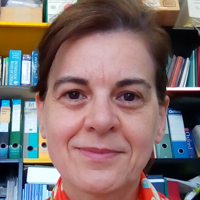
 I am currently a researcher within the Italian National Research Council (CNR), Neuroscience Institute, and I work at the Department of Biomedical Science at the University of Padua. I was previously affiliated with the CNR Institute of Biomedical Technologies (ITB) in Milan. The long-term interest of my work is mitochondrial pathophysiology, in particular the molecular characterization and functioning of the permeability transition pore (PTP), and, more recently, the role mitochondria play in neurodegenerative diseases such as Alzheimer's disease, concerning in particular Ca2+ dyshomeostasis, reactive oxidative species (ROS) production and metabolic imbalance.
I am currently a researcher within the Italian National Research Council (CNR), Neuroscience Institute, and I work at the Department of Biomedical Science at the University of Padua. I was previously affiliated with the CNR Institute of Biomedical Technologies (ITB) in Milan. The long-term interest of my work is mitochondrial pathophysiology, in particular the molecular characterization and functioning of the permeability transition pore (PTP), and, more recently, the role mitochondria play in neurodegenerative diseases such as Alzheimer's disease, concerning in particular Ca2+ dyshomeostasis, reactive oxidative species (ROS) production and metabolic imbalance.
I graduated from the University of Padua with a BSc Degree in Biology, and from the same University I earned a MSc Degree in Biochemistry and Clinical Chemistry. I spent three years of postgraduate research in Molecular Biology at the Vollum Institute, the Oregon Health & Science University, Portland Oregon. From those years in the Pacific North West, together with a robust training in molecular biology, I gained also a love for outdoor sport activities, and in particular for biking.
Riccardo Filadi
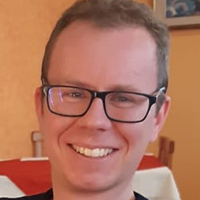
 I have mainly contributed to the study of the role played by the physical/functional connection between endoplasmic reticulum (ER) and mitochondria in the regulation of key intracellular processes, such as the modulation of cell death and cell bioenergetics. In particular, ER-mitochondria interplay has been investigated in the context of Familial Alzheimer's disease. My research focused on the exploration of the molecular nature and of the relationship between proteins mediating ER-mitochondria tethering. I'm currently interested in the generation of novel tools to study organelle juxtaposition in living cells, as well as to investigate the mechanisms leading to the generation and deciphering of Ca2+ microdomains in localized subcellular compartments. In addition, by employing and creating specific genetically-encoded fluorescent probes, I'm investigating the dynamics (particularly within mitochondria) of different metabolites and signalling molecules (Ca2+, ATP, pyruvate, lactate, etc.), both in cell physiology and pathology. The final goal of my research activity is to understand whether alterations in these pathways are linked to the onset and progression of human pathologies, as well as to test their potential as possible therapeutic targets or as disease biomarkers.
I have mainly contributed to the study of the role played by the physical/functional connection between endoplasmic reticulum (ER) and mitochondria in the regulation of key intracellular processes, such as the modulation of cell death and cell bioenergetics. In particular, ER-mitochondria interplay has been investigated in the context of Familial Alzheimer's disease. My research focused on the exploration of the molecular nature and of the relationship between proteins mediating ER-mitochondria tethering. I'm currently interested in the generation of novel tools to study organelle juxtaposition in living cells, as well as to investigate the mechanisms leading to the generation and deciphering of Ca2+ microdomains in localized subcellular compartments. In addition, by employing and creating specific genetically-encoded fluorescent probes, I'm investigating the dynamics (particularly within mitochondria) of different metabolites and signalling molecules (Ca2+, ATP, pyruvate, lactate, etc.), both in cell physiology and pathology. The final goal of my research activity is to understand whether alterations in these pathways are linked to the onset and progression of human pathologies, as well as to test their potential as possible therapeutic targets or as disease biomarkers.
Elisa Greotti
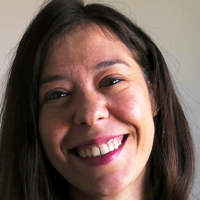
 Over the last years, I have been involved in studying calcium (Ca2+) signaling in pathophysiology. My research focused on the development of new tools to explore the mitochondrial functionality, and in particular mitochondrial Ca2+ dynamics, in vivo. Therefore, I worked on the improvement of mitochondria-targeted Ca2+ probes and the creation of a new mitochondria-targeted Channelrhodopsin. These methodologies are instrumental for addressing with novel approaches the role of second messenger heterogeneity in different pathophysiological conditions not only in cell cultures, but also in tissue preparations (acute slices) and in vivo. Currently, I am interested in studying Familial Alzheimer's Disease (FAD), focusing on the imbalance of cellular Ca2+ homeostasis. Indeed, Alzheimer's disease (AD) is the most frequent form of dementia, a small percentage of cases is inherited (FAD), due to dominant mutations in the genes encoding for Amyloid Precursor Protein (APP), Presenilin-1 (PS1) and Presenilin-2 (PS2). PS1 and PS2 are the catalytic core of the γ-secretase complex. Beside the current hypothesis about amyloid and tau hyperphosphorylated, cellular Ca2+ alterations have been reported to contribute to the AD pathogenesis, however this topic is still debated in the scientific community. The final goal is the employment of these newly created tools to perform in vivo Ca2+ measurements in different tissues and subcellular compartments in animal models of AD.
Over the last years, I have been involved in studying calcium (Ca2+) signaling in pathophysiology. My research focused on the development of new tools to explore the mitochondrial functionality, and in particular mitochondrial Ca2+ dynamics, in vivo. Therefore, I worked on the improvement of mitochondria-targeted Ca2+ probes and the creation of a new mitochondria-targeted Channelrhodopsin. These methodologies are instrumental for addressing with novel approaches the role of second messenger heterogeneity in different pathophysiological conditions not only in cell cultures, but also in tissue preparations (acute slices) and in vivo. Currently, I am interested in studying Familial Alzheimer's Disease (FAD), focusing on the imbalance of cellular Ca2+ homeostasis. Indeed, Alzheimer's disease (AD) is the most frequent form of dementia, a small percentage of cases is inherited (FAD), due to dominant mutations in the genes encoding for Amyloid Precursor Protein (APP), Presenilin-1 (PS1) and Presenilin-2 (PS2). PS1 and PS2 are the catalytic core of the γ-secretase complex. Beside the current hypothesis about amyloid and tau hyperphosphorylated, cellular Ca2+ alterations have been reported to contribute to the AD pathogenesis, however this topic is still debated in the scientific community. The final goal is the employment of these newly created tools to perform in vivo Ca2+ measurements in different tissues and subcellular compartments in animal models of AD.
Diana Pendin
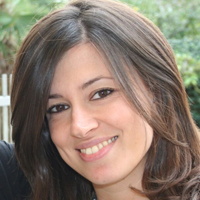
 Diana Pendin is a Researcher at the Neuroscience Institute of the National Research Council since 2018. Her research aims to untangle the molecular basis of the pathogenesis of the neurodegenerative disease Hereditary Spastic Paraplegia (HSP), using Drosophila melanogaster as an animal model. Since the very beginning of her career, she has been particularly interested in understanding how ER morphology alterations affect cellular, and more specifically neuronal, function. Recently, she explored the role of Ca2+ homeostasis dysregulation in the development of HSP by employing Ca2+ imaging techniques. She also contributed in developing novel tools to study in vivo Ca2+ dynamics, including viral vectors and transgenic animals (mice and Drosophila) expressing FRET-based Ca2+ probes.
Diana Pendin is a Researcher at the Neuroscience Institute of the National Research Council since 2018. Her research aims to untangle the molecular basis of the pathogenesis of the neurodegenerative disease Hereditary Spastic Paraplegia (HSP), using Drosophila melanogaster as an animal model. Since the very beginning of her career, she has been particularly interested in understanding how ER morphology alterations affect cellular, and more specifically neuronal, function. Recently, she explored the role of Ca2+ homeostasis dysregulation in the development of HSP by employing Ca2+ imaging techniques. She also contributed in developing novel tools to study in vivo Ca2+ dynamics, including viral vectors and transgenic animals (mice and Drosophila) expressing FRET-based Ca2+ probes.
Domenico Azarnia Tehran

 I studied Biological Sciences at the University of Rome “La Sapienza” and obtained a Ph.D. in Bioscience and Biotechnology from the University of Padua. In 2016, supported by an Alexander von Humboldt fellowship, I joined Prof. Volker Haucke's lab at the Leibniz-Forschungsinstitut für Molekulare Pharmakologie (FMP) in Berlin to study synaptic endocytosis and plasticity. In 2023, funded by the Klaus Tschira Foundation, I became project leader in Prof. Fan Liu's lab, where I used advanced proteomics to study synapse organization. Since March 2025, thanks to the Programma per Giovani Ricercatori “Rita Levi Montalcini”, I have been Assistant Professor at the University of Padua. My research explores synaptic plasticity, brain aging, and neurodegeneration, with a focus on redox biology, organelle contact sites and neuron-astrocyte interactions. Beyond the lab, I am passionate about combining business and science, and I hold an Executive MBA. I also work to improve peer review and research culture by supporting early-career researchers and promoting preprints, open evaluation, and collaborative science. In my free time, I enjoy life with my wife Alice, our daughter Matilde and our dog Astro (yes, named after astrocytes).
I studied Biological Sciences at the University of Rome “La Sapienza” and obtained a Ph.D. in Bioscience and Biotechnology from the University of Padua. In 2016, supported by an Alexander von Humboldt fellowship, I joined Prof. Volker Haucke's lab at the Leibniz-Forschungsinstitut für Molekulare Pharmakologie (FMP) in Berlin to study synaptic endocytosis and plasticity. In 2023, funded by the Klaus Tschira Foundation, I became project leader in Prof. Fan Liu's lab, where I used advanced proteomics to study synapse organization. Since March 2025, thanks to the Programma per Giovani Ricercatori “Rita Levi Montalcini”, I have been Assistant Professor at the University of Padua. My research explores synaptic plasticity, brain aging, and neurodegeneration, with a focus on redox biology, organelle contact sites and neuron-astrocyte interactions. Beyond the lab, I am passionate about combining business and science, and I hold an Executive MBA. I also work to improve peer review and research culture by supporting early-career researchers and promoting preprints, open evaluation, and collaborative science. In my free time, I enjoy life with my wife Alice, our daughter Matilde and our dog Astro (yes, named after astrocytes).
Alejandro Ciocci Pardo
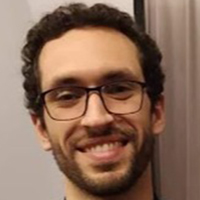
Assistant Professor
Annamaria Lia
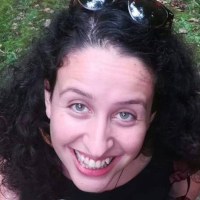
 Hi! I'm Anna and I'm currently Assistant Professor at the University of Padova. I obtained my Bachelor Degree in Biology at the University of Calabria; afterwards I moved to Padua where I obtained my Master Degree in Molecular Biology. During my Master thesis, I started to be interested in Neuroscience and for this reason I started my Ph.D. in Giorgio Carmignoto's lab where I studied the role of astrocytes in mouse models of Alzheimer's Disease. During the years in the Carmignoto lab, I gained experience in Ca2+ imaging with 2-photon microscopy in in vivo and ex vivo preparations and electrophysiology. I joined the Pizzo lab in May 2023 and I'm interested in using imaging approaches to dissect the role of neuroinflammation in Alzheimer's disease, by keeping an eye to the involvement of glial cells in this process. Science for me is also sharing new ideas, which is why I love going abroad for conferences and learning new techniques. In my spare time, I try to satisfy my wanderlust! I enjoy to spend time with my loved ones, playing cards and board games. During my “me-time”, I love reading books... especially crime novels!
Hi! I'm Anna and I'm currently Assistant Professor at the University of Padova. I obtained my Bachelor Degree in Biology at the University of Calabria; afterwards I moved to Padua where I obtained my Master Degree in Molecular Biology. During my Master thesis, I started to be interested in Neuroscience and for this reason I started my Ph.D. in Giorgio Carmignoto's lab where I studied the role of astrocytes in mouse models of Alzheimer's Disease. During the years in the Carmignoto lab, I gained experience in Ca2+ imaging with 2-photon microscopy in in vivo and ex vivo preparations and electrophysiology. I joined the Pizzo lab in May 2023 and I'm interested in using imaging approaches to dissect the role of neuroinflammation in Alzheimer's disease, by keeping an eye to the involvement of glial cells in this process. Science for me is also sharing new ideas, which is why I love going abroad for conferences and learning new techniques. In my spare time, I try to satisfy my wanderlust! I enjoy to spend time with my loved ones, playing cards and board games. During my “me-time”, I love reading books... especially crime novels!
Sonia Sonda
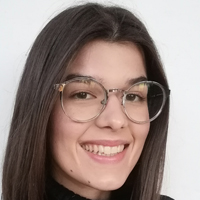
CNR Post-doc Research Fellow
Ambra Bertocco
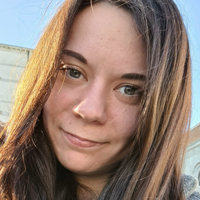
Post-doc Research Fellow
Tânia Fernandes
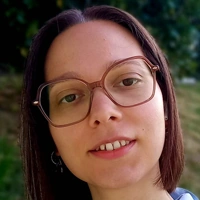
Post-doc Research Fellow
Manuela Santalla
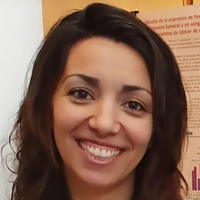
 I am Manuela, a Genetist from the Universidad Nacional del Noroeste de Buenos Aires-Argentina and I obtained my Ph.D. in Biological Sciences at the Universidad Nacional de La Plata-Argentina. During my Ph.D., I worked in cardiac physiology and physiopathology of Drosophila melanogaster. The focus of my project was to understand how the differential expression of two proteins involved in translation (eIF4E and 4E-BP) impact cardiac function, more specifically, in intracellular calcium handling. During my Ph.D. I did a three-month internship in the National Institute of Cancer at México City to improve my skills in protein-protein interactions using two-hybrid assays. Then I made 2 years post-doc studying the cardiac impact of hereditary forms of neurodegenerative diseases.
I am Manuela, a Genetist from the Universidad Nacional del Noroeste de Buenos Aires-Argentina and I obtained my Ph.D. in Biological Sciences at the Universidad Nacional de La Plata-Argentina. During my Ph.D., I worked in cardiac physiology and physiopathology of Drosophila melanogaster. The focus of my project was to understand how the differential expression of two proteins involved in translation (eIF4E and 4E-BP) impact cardiac function, more specifically, in intracellular calcium handling. During my Ph.D. I did a three-month internship in the National Institute of Cancer at México City to improve my skills in protein-protein interactions using two-hybrid assays. Then I made 2 years post-doc studying the cardiac impact of hereditary forms of neurodegenerative diseases.
I am interested in the physiopathology of hereditary diseases using a powerful genetic tool as Drosophila.
I enjoy spending time with my family, singing and dancing with my daughter Irina, drinking mate with friends, and training pole sport.
Martina Bedetta
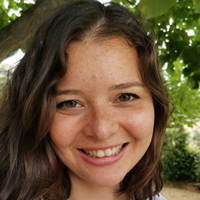
Ph.D. Student
Neha Kachappilly
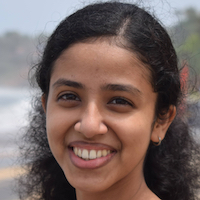
Ph.D. Student
Federico Mezzalira
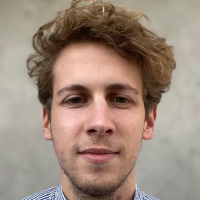
Ph.D. Student
Mariagrazia Mancuso
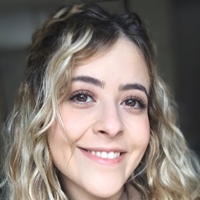
CNR Research Fellow
Mariagrazia Mancuso


Elena Bonaccorsi
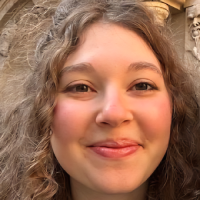
Undergraduate Student
Giorgia Grigolon
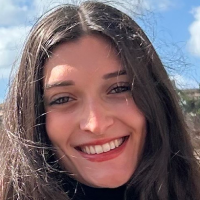
Undergraduate Student
Valeria Torrado Melo
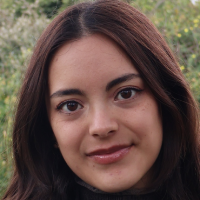
Undergraduate Student
Irene D'Arsiè

 Hi! I am Irene and I recently graduated in Cellular and Molecular Biotechnology. Currently I am a CNR research fellow, my main focus is on the dynamics of interorganelles contacts which I study through chemogenetic reporters.
Hi! I am Irene and I recently graduated in Cellular and Molecular Biotechnology. Currently I am a CNR research fellow, my main focus is on the dynamics of interorganelles contacts which I study through chemogenetic reporters.
Michele Gintoli
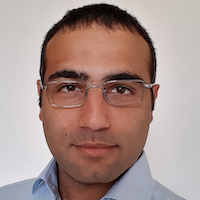
 I received my Ph.D. in 2018 at the University of Padua, with a thesis on the fabrication of spiral phase plates applied to two-photon super-resolution (STED) microscopy. I moved to the University of Exeter in 2018, where I worked on multiphoton microscopes with remote focusing capabilities until 2021. From 2021 to 2023 I worked at the University of Twente, on a new scanning microscope paradigm using wavefront-shaping as a substitute to regular objective lenses.
I received my Ph.D. in 2018 at the University of Padua, with a thesis on the fabrication of spiral phase plates applied to two-photon super-resolution (STED) microscopy. I moved to the University of Exeter in 2018, where I worked on multiphoton microscopes with remote focusing capabilities until 2021. From 2021 to 2023 I worked at the University of Twente, on a new scanning microscope paradigm using wavefront-shaping as a substitute to regular objective lenses.
My interests rotate around optical systems for imaging, in particular experimental and high-end microscopes.
Paulo Magalhães
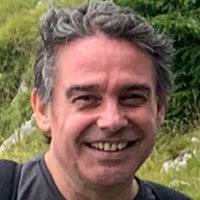
I.T. Support
Cristina Fasolato
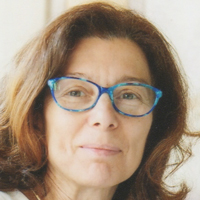
 From '87 to '91, I worked for my Ph.D. under the supervision of T. Pozzan. From '92 to '93, as an EMBO Fellow, I expanded my expertise in electrophysiology at the Max Plank Institut für Biophysikalische Chemie of Göttingen (Germany), under the supervision of R. Penner and M. Hoth. There, I participated in the characterization of the long sought after current responsible for capacitative Ca2+ entry (ICRAC), which they described in '92. In '96, I continued this research in the group directed by B. Nilius in Leuven (Belgium). In '98 I got a permanent position as Assistant Professor at the Dept of Biomedical Sciences (DBS), University of Padua. Here, I continued the characterization of ICRAC and Ca2+ stores in different model cells. In 2000, my interest turned to Ca2+ homeostasis in brain cells, under both physiological and pathological conditions. In recent years, I focused on mutant presenilins and their role in Ca2+ dysregulation and Alzheimer's disease.
From '87 to '91, I worked for my Ph.D. under the supervision of T. Pozzan. From '92 to '93, as an EMBO Fellow, I expanded my expertise in electrophysiology at the Max Plank Institut für Biophysikalische Chemie of Göttingen (Germany), under the supervision of R. Penner and M. Hoth. There, I participated in the characterization of the long sought after current responsible for capacitative Ca2+ entry (ICRAC), which they described in '92. In '96, I continued this research in the group directed by B. Nilius in Leuven (Belgium). In '98 I got a permanent position as Assistant Professor at the Dept of Biomedical Sciences (DBS), University of Padua. Here, I continued the characterization of ICRAC and Ca2+ stores in different model cells. In 2000, my interest turned to Ca2+ homeostasis in brain cells, under both physiological and pathological conditions. In recent years, I focused on mutant presenilins and their role in Ca2+ dysregulation and Alzheimer's disease.
-
Selected Publications
- A. Leparulo , M. Mahmud , E. Scremin, T. Pozzan, S. Vassanelli S, C. Fasolato "Dampened Slow Oscillation Connectivity Anticipates Amyloid Deposition in the PS2APP Mouse Model of Alzheimer's Disease." Cells 2020, 9(1) pii: E54. doi: 10.3390/cells9010054 (2020) 9(1), 54.
- R. Fontana, M. Agostini, E. Murana, M. Mahmud, E. Scremin, M. Rubega, G. Sparacino, S. Vassanelli and C. Fasolato (2017) "Early hippocampal hyper-excitability in PS2APP mice: role of mutant PS2 and APP" Neurobiology of Aging 50, 64-76.
- M. Agostini and C. Fasolato (2016) “When, where and how? Focus on neuronal calcium dysfunctions in Alzheimer's Disease” Cell Calcium Nov;60(5):289-298. doi:10.1016/j.ceca.2016.06.008. Review.
- C. Lazzari, M.J. Kipanyula, M. Agostini, T. Pozzan and C. Fasolato (2015) Aβ42 oligomers selectively disrupt neuronal calcium release. Neurobiology of Aging 36, 877-885.
- M.J. Kipanyula, L. Contreras, E. Zampese, C. Lazzari, A.K.C. Wong, P. Pizzo, C. Fasolato (corresponding author) and T. Pozzan (2012) Ca2+ dysregulation in neurons from transgenic mice expressing mutant presenilin 2. Aging Cell 11, 885–893 ISSN: 1474-9718, doi: 10.1111/j.1474-9726.2012.00858.x.
